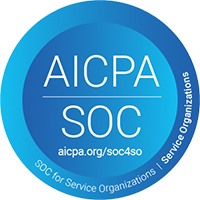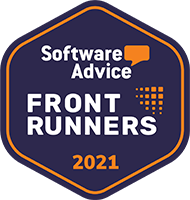How to Manage Consignment Inventory: Common Mistakes, Best Practices and Choosing the Right Technology

When distributors stock and manage inventory onsite for their customer, taking payment only when that inventory is used, it’s known as consignment or consigned inventory.
Distributors might be reluctant to expand their consigned inventory business because they think consignment is too expensive. They believe it would require them to stock too much inventory at customers’ locations, tying up cash and increasing risk.
Yet, if distributors set the right consignment terms and follow consignment inventory best practices, there are many benefits for both distributors and their customers. Once you know the basics of how to manage consignment inventory, it’s much easier to get it right. Let's look at what that entails...
Table of Contents
- What Is Consignment Inventory?
- What Are The Benefits Of Consignment Inventory?
- Common Mistakes With Consignment Inventory
- What Are The Pros & Cons Of Consignment Inventory?
- What Are The Risks In Consignment Inventory?
- Ask Yourself These Questions First
- What Are The Best Practices For Consignment Inventory?
- Why Partner With Eturns For Consignment Inventory?
- Build A Moat
- Start Your 30-Day Free Trial
What Is Consignment Inventory?
Consignment is when distributors stock and manage inventory at a customer’s site, such as a warehouse, stockroom, or jobsite, but the customer doesn’t pay for the inventory until it is used or sold.
This can be a profitable strategy when coupled with the right consignment tracking system. By having stock at the customer’s site, distributors can sell more quickly since customers already have needed items in stock. To do it right, distributors must maintain the right balance. Make sure you’re not stocking so much inventory that it remains unused, and make sure you have a clear reorder point so customers don't run out of inventory at their site.

What Are The Benefits Of Consignment Inventory?
Consignment inventory has benefits for customers as well as distributors. One of the primary benefits is the opportunity to nurture a partnership between distributor and customer. When distributors stock and manage inventory at a customer’s site, the distributor becomes a key inventory lifeline for the customer.
Consignment inventory works best if it’s managed with technology that ensures the distributor is not overstocking inventory. The other component of success is that the distributor's customers are billed efficiently for what they use.
The benefit for customers is that they can keep inventory on-site and available when it is needed, only paying for the inventory once it is sold or used. This way, they become a reliable source of product without having to put down a lot of capital upfront.
Post-COVID, distributors are experiencing even more benefits. When the supply chain is no longer reliable, having customers reliably supplied with a stash of inventory on-hand can turn distributors into heroes. Plus, when many businesses are facing unstable cashflow, customers can rest easy knowing they already have access to inventory.
5 Common Mistakes With Consignment Inventory
While consignment inventory has several advantages, there are a few common mistakes that distributors make — especially when they're putting together contracts with their customers for consignment inventory.
Here are five actions not to take:
1. Doing whatever the customer wants
If the customer is asking you to put your inventory in their building, then you want to make sure that the inventory is going to be secure. In addition, ask if it's going to be insured, and who is going to have access to your inventory. It’s your product, so you need to make sure you trust its storage location.
2. Trusting but not verifying
Trust is paramount when it comes to forging a strong consignment inventory relationship. But you also need to verify, and this is especially apparent when it comes to billing.
For example, if you show that the customer has used 10 items but the customer says they've only used five, you need to have inventory management software in place that provides a reliable, accurate accounting of exactly who used the product and when so that you get paid without any haggling.
3. Not having a contract in place
It’s important to have a contract to hold both parties accountable. The contract might stipulate that when the distributor takes an inventory or manual count, the numbers must be reconciled or the customer is on the hook for the difference. If you set the consignment terms upfront, you can always go back and point to the contract in case of any discrepancies.
4. Forgetting about the margins
When doing consignment inventory, it’s not enough to look at the amount of business you're doing with the customer. Consider whether you have an adequate net margin for that customer to justify the extra effort of consignment inventory.
5. Not using a consignment management app to help with billing
You don't want to try to manage consignment manually. And you don't want an inventory tracking app that will trigger a million single-item consumption orders that each require their own invoice. You can decrease PO and invoice costs using a consignment management app to consolidate all the consigned inventory consumption transactions. The right apps can give you a choice to: 1) immediately send off the consumption transactions, 2) hold them until a later date by batching them, or 3) consolidate them and send them at a later date.
What Are The Pros & Cons Of Consignment Inventory?
Consignment can mutually benefit sellers and buyers, but it may have drawbacks. To help you weigh the pros and cons, we've outlined this selling method's potential advantages and disadvantages.
Pros for distributors
- Expanded market reach: Introduce your brand and products to new customers.
- Enhanced customer experience: Allow customers to see and touch products before buying and to retain profitability by not carrying excess inventory they won’t use.
- Increased market penetration: Easier entry into competitive markets for smaller businesses.
- Brand building: Establish a strong reputation for your products.
- Lower warehouse inventory costs: Reduced storage expenses at your warehouse.
- Product differentiation: Stand out from a retailer's existing offerings with your value-added service.
- Potential long-term partnerships: Build lasting relationships with customers.
Cons for distributors
- Delayed payment: Revenue is generated only after product sale.
- Inventory recovery: Unsold products must be retrieved and resold.
- Product suitability: Not all products are suitable for consignment.
- Dependency on customer: Reliance on the customer for sales.
- Potential financial loss: Damage or unsold products can lead to monetary losses.
- High upfront costs: Investing in initial inventory can be expensive.
- Limited promotion incentive: Retailer may lack motivation to promote products.
Pros for customers
- Deferred payments: Payment is made only after product sale.
- Inventory flexibility and improved profitability of projects: Unsold items can be returned.
- Reduced financial risk: No upfront investment in inventory.
- Expanded product range: Quickly add new products to the store.
- Improved inventory management: Avoid stockouts.
- Increased customer interest: New products can attract new customers.
Cons for customers
- Increased operational costs: Storage and security costs for inventory.
- Space constraints: Need to allocate space for consigned products.
- Potential liability: Responsibility for product damage or theft.
- Separate inventory management: Additional effort to manage consigned stock.
- Manual tracking is cumbersome: Must commit to a scanning app for usage tracking for success.
What Are The Risks In Consignment Inventory?
- Limited Control: Consignors have less say in product presentation and handling, relying on customers for product care.
- Lower Profit Margins: Consignors may earn smaller profit margins compared to outright sales, but they may not have won the business at all without offering consignment.
- Inventory Risk: Retailers are responsible for product loss or damage, which can lead to financial liabilities.
- Higher Initial Costs: Consignors often incur significant upfront expenses for packaging and shipping.
Distributors Should Ask These 3 Questions Before Offering Consignment Inventory:
Before beginning a consignment inventory program, ask yourself these questions to be sure you’re aware of the risks and rewards of consignment inventory.
- What happens to my inventory? Again, be sure you understand where your inventory will be stored, who has access to it, and what happens if it isn’t sold right away.
- What if the customer loses or destroys my inventory? Trust in the customer is paramount. Yet, accidents happen. Know what you’ll do if the customer loses or destroys your inventory before it can be sold. This is a good question to address in your consignment inventory contract.
- How will you track your inventory and trigger replenishment? Using consigned inventory tracking software is just as beneficial for distributors as it is for the customer. Tracking usage helps customers keep exactly the right amount of inventory on hand, and helps distributors know when they’ll need to replenish. Be sure to have a system in place for tracking before starting this partnership to create better transparency and efficiency for all parties. Make sure the software will optimize the items’ minimums and maximums based on usage so the distributor only has the necessary cash invested in consigned inventory and also minimizes the annual inventory carrying costs which run anywhere between 25 and 55% of inventory value.
It’s a good rule of thumb to talk to the experts in your industry before beginning a consigned inventory partnership. For distributors, our experts at eTurns have decades of experience with consignment inventory and can guide you through the process.
5 Best Practices For Consignment Inventory
To get consignment inventory right:
1. Invest in automatic replenishment tools to track usage and prevent stockouts
A successful consignment inventory service requires staying well-stocked to ensure the customer always has what they can use or sell. Automatic replenishment tools offer the ability to track usage of items and set minimum and maximum levels so the distributor can reorder just what their customers need when they need it. When you use automated tracking tools, like eTurns TrackStock, you can take the guesswork out of the replenishment game.
2. Use consignment management software that can consolidate billing
Consignment management software like eTurns can track usage, set min/maxes, and trigger automated orders that can be consolidated or batched into one purchase order (PO) for the distributor at chosen intervals. Letting software do the heavy lifting with repetitive tasks frees up your time to work on your next partnership.
3. Consider how fast inventory turns
When a customer turns inventory quickly, consigned inventory is a better value for the distributor. Look for a higher value, higher turns product mix. The business reasons must be there for it to be a valuable partnership.
4. Target the right product mix for consignment inventory
A customer might say they want everything on consignment. But look at which items make sense to consign. Out of 100 items, 40 of them might be spot buys, and 60 might be products used on a regular basis. In that case, you could set up consignment only on the 60 items and monitor replenishment on those. This is an area in which eTurns can advise you.
5. Choose the right technology to make sure your consigned inventory levels are optimized
Choosing the right technology to support your consignment inventory program is critical. The benefit of using eTurns for consignment is that our min/max tuning capability can optimize the inventory and ensure your customer has the minimum amount they need to serve their end-customers.
Automating this process eliminates the guesswork. With the right software in place, there’s no need for spreadsheets.
With the AI Min/Max Dashboard, you can get calculated recommendations for your customers’ optimal inventory levels, based on their item usage. This ensures that the distributor is spending the minimum amount necessary to service your consigned customer, thereby saving you cash and annual carrying costs.
Starting down the path of consignment inventory can present great opportunities for distributors who want to fine-tune their relationships with customers. It also opens opportunities for greater profitability. When successful, expect increased customer spend and improved loyalty over time.
Why Partner With Eturns For Consignment Inventory?
There are some distinct benefits to using eTurns for consignment inventory:
- Speed: Replenishing inventory using eTurns is 10X faster than replenishing through an e-commerce site or with paper and pencil.
- Profit: Distributors who offer eTurns to their customers for replenishing inventory have stated that eTurns has helped them increase same-customer revenues by over 30%. Procurement costs also decrease measurably for both the distributor and the distributor’s customer.
- Insight: With eTurns' real-time, point-of-use inventory data, distributors help their customers optimize their stockrooms with better forecasting and prevent overstocking and stockouts.
Build A Moat
There’s a risk in consigning inventory, and it’s not for everyone. It’s important to take a strategic approach to consignment inventory. But when done right, and with the right customers, you'll build what Warren Buffett called an “economic moat". This refers to the ability to keep a competitive advantage over the competition while safeguarding long-term profits. The right technology will play a key role in that.
Ready To Partner With eturns For Your Consignment Inventory Strategy?
Give us a test drive. Try our TrackStock software free for 30 days and see how we can help manage your consignment inventory.




